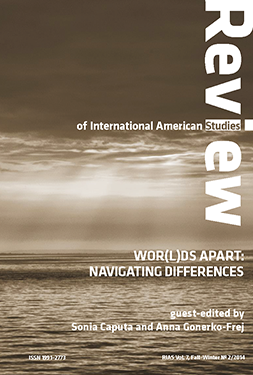Berrell, M. and Gloet, M. 1999. ‘Reflections on the cultural dimensions of educational administration’, Journal of Educational Administration and Foundations 13 (2): 10-32.
Google Scholar
Brown, M. R. 2007. ‘Educating all students: Creating culturally responsive teachers, classrooms, and schools’, Intervention in School and Clinic 43 (1): 57-62.
Google Scholar
Brumfit, C. J. 1980. Problems and Principles in English Teaching. Oxford: Pergamon.
Google Scholar
Byram, M. and Morgan, C. et al. 1994. Teaching and Learning Language and Culture. London: Multilingual Matters.
Google Scholar
Chapman, E. S. 1998. ‘Key Considerations in the Design and Implementation of Effective Peer-Assisted Learning Programs’, in K. Topping , K. and S. Ehly, S. (eds) Peer-Assisted Learning. Mahwah, New Jersey, J and London, UK: Lawrence Erlbaum Associates, 67-84.
Google Scholar
Damen, L. 2003. ‘Closing the Language and Culture Gap: An Intercultural-Communication Perspective’, in D. Lange , and R. M. Paige (eds) Culture as the Core-Perspectives on Culture in Second Language Learning. Greenwich, CTConnecticut: Information Age Publishing, 71-88.
Google Scholar
Gay, G. 2002. ‘Preparing for culturally responsive teaching’, Journal of Teacher Education 53 (2): 106-116.
Google Scholar
Gochenour, T. and Janeway, A. 1993. ‘Seven Concepts in Cross-Cultural Interaction: A Training Design’, in T. Gochenour Beyond Experience. Intercultural Press. Intercultural Press, Yarmouth, Maine: Intercultural Press,E, 1-9.
Google Scholar
Grabbe, W. and Stoller, F. L. 1997. ‘Content-based instruction: Research foundations’, in M. Snow and D. Brinton (eds) The Content-based Classroom: Perspectives on Integrating Language and Content. New York: Adison Wesley Longman Publishing Company, 5-21.
Google Scholar
Hall, E. T. 1966. The hidden dimension. New York: Doubleday.
Google Scholar
Hofstede, G. 2010. Cultures and Organizations: Software of the Mind (revised and expanded 3rd edition). New York: McGraw-Hill.
Google Scholar
Hinkel, E. 2000. Culture in Second Language Teaching and Learning. London: Cambridge University Press.
Google Scholar
Hofstede, G. 2010. Cultures and Organizations: Software of the Mind (revised and expanded 3rd edition). New York: McGraw-Hill.
Google Scholar
Howatt, A. P. R. 1984. A History of English Language Teaching. Oxford: Oxford University Press.
Google Scholar
Jenkins, J. 2007. English as a Lingua Franca: Attitude and Identity. Oxford: Oxford University Press.
Google Scholar
Kramsch, C. 1991. ‘Culture in language learning: A view from the states’, in de K. Boot, R. B. K., Ginsberg, R. B. and C. Kramsch, C. (eds) Foreign language research in cross-cultural perspective. London: John Benjamin, 217-240.
Google Scholar
Kramsch, C. 1998. Language and Culture. Oxford: Oxford University Press.
Google Scholar
Lange, D. 2003. ‘Implications of Theory and Research for the Development of Principles for Teaching and Learning Culture in Second Language Classrooms’, in D. Lange and R. M. Paige (eds) Culture as the Core-Perspectives on Culture in Second Language Learning. Greenwich, ConnecticutT: Information Age Publishing, 271-336.
Google Scholar
Maley, A. 2007. English for Specific Purposes. Resource Books for Teachers series. Oxford: Oxford University Press.
Google Scholar
McKay, S. 2002. Teaching English as an International Language. Oxford: Oxford University Press.
Google Scholar
Neuner, G. 2012. ‘The dimensions of intercultural education’, in Council of Europe Intercultural Competence for All. Strasbourg: Council of Europe Publishing.
Google Scholar
Prodromou, L. 1992. ‘What culture? Which culture? Cross-cultural factors in language learning’, ELT Journal 46 (1): 39-50.
Google Scholar
Seelye, H. N. 1988. Teaching Culture. Lincolnwood, Illinois.: National Textbook Company.
Google Scholar
Slavin, R. E. 1990. Cooperative learning: Theory, research, and practice. Englewood Cliffs, New JerseyJ: Prentice Hall.
Google Scholar
Slavin, R. E. 1991. Students team learning: A practical guide to cooperative learning. Washington, CDDC: National Educational Association of the United States.
Google Scholar
Stevens, R. J. 2008. ‘Cooperative Learning and Literacy Instruction in Middle Level Education’, in in R. M. Gillies, A. F. Ashman, and J. Terwel, (eds) The Teacher’s Role in Implementing Cooperative Learning in the Classroom. New York: Springer, 92-109.
Google Scholar
Topping, K. 2000. Peer-Assisted Learning: A Practical Guide for Teachers. Cambridge, MAMassachusetts: Bookline Books.
Google Scholar
Webb, N. M. 2008. ‘Teacher Practices and Small-Group Dynamics in Cooperative Learning Classrooms’, in R. M. Gillies, A. F. Ashman, and J. Terwel, (eds) The Teacher’s Role in Implementing Cooperative Learning in the Classroom. New York: Springer, 201-221.
Google Scholar
Wilkins, D. 1976. Notional Syllabuses. Oxford: Oxford University Press.
Google Scholar



 10.31261/RIAS
10.31261/RIAS